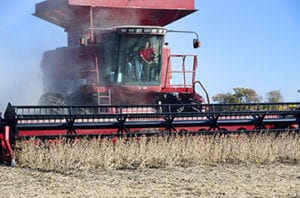By Jeff Shaner
AgVenture Regional Product Manager & Soybean Lead

Planting soybeans in the same chronology as the optimum time to plant corn should increase yields at the end of the season. Talk to your AgVenture Yield Specialist about a specific planting plan for your farm.
Everywhere you tune in, folks are saying you should plant your soybeans early. Chances are you know several neighbors who did just that this spring. The recent cold snap may have dampened your enthusiasm some for such an adventure, but the truth of the matter is this: for top yield potential, your soybeans would love to be planted in the same chronology as the optimal time for corn planting in your region.
For those who plant corn first and beans later, this is a shift in philosophy. Along with the adjustments to equipment and manpower, here are the basics for having a good go with earlier soybean plantings.
- While you might bump up your planting date by several weeks compared to normal, you do not necessarily want to push your fall maturation ahead into potentially drier August weather. Consider moving to a different set of relative maturities on the products you plant. For example, if you typically utilize soybeans in the 2.2 to 2.6 maturity range, now you may want to purchase a range of 2.5 to 3.0.
- Planting into the cooler soils you are likely to experience with an earlier date will enhance your need for a premium seed treatment. Your AgVenture Independent Seed Company has just the medicine for you.
- By tweaking your planting date, you may also be tweaking the disease spectrum you are likely to encounter. Look for products that feature good Sudden Death Syndrome scores and be aware that building plant mass ahead of schedule may increase the likelihood of something like White Mold.
- Being among the first fields in the neighborhood to emerge is like ringing the dinner bell for insects. Scout and react from the get-go. Consider that you will want to adjust your thought process on scouting and reacting all throughout the growing season compared to the later planted fields around you.
For every two weeks you delay planting soybeans past their optimal date, you lose 6 to 10% yield capacity. It’s like clockwork. Count on it. While we have had many instances of solid soybean yields in the past with later planting dates, the truth remains that:
- those yields would have been even higher if the crop had been placed in the ground at the optimal planting date,
- with impeccable planting standards,
- and the proper considerations were made for how to adjust with the points outlined here.